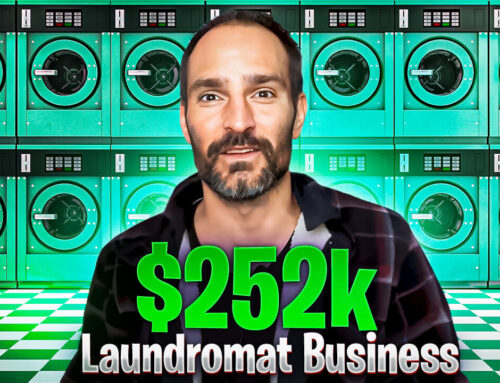Thinking about starting a crawfish farm? This business model can be bootstrapped on a small scale in your spare time with minimal investment. This all assumes of course that you don’t mind putting sweat equity into the build out of your pond and raising the crawfish yourself.
Ready to learn what it takes to raise your own crawfish and sell them? Dive into our getting started guide below.
Industry overview
If you live outside the state of Louisiana, you might think raising crawfish is a pretty niche market. But it’s a way of for folks in Louisiana. Reports say there are roughly 1,200 total crawfish farms producing 90% of the United States supply of the product in this state alone.
The ideal environment for crawfish to grow and thrive is in a rice field. Since the price of rice is so low and usually sourced from countries with low-cost labor, many business minded farmers choose to raise these crawfish instead of growing rice to sell.

Alternating crops between rice and crawfish every other year produce the best habitat by 50% of all farmers to produce the best yields. In the wild, crawfish eat all sorts of plant matter and some proteins so they aren’t picky eaters.
There are more than 500 species of crawfish in different parts of the world. Crawfish live in freshwater environments with running water like rivers and streams. The average lifespan of a crawfish is 2 – 3 years.
Crawfish or crawdads have many different names, including mudbugs
How much do crawfish farmer’s make?
The average independent crawfish farmer will make $46,800 in gross revenue annually.
But the average income of a crawfish isn’t much help for determining what your personal income will be from raising and selling the product.
Your results will be determined largely on how big you can scale the farming operation. The income potential of an individual crawfish farmer will vary widely are determined based on these three factors:
Acres: The more space you have to produce crayfish, the more product you’ll be able to sell each year. Most crawfish farms are under 150 acres total. Most crawfish farms are small operations between 10 – 20 acres. But the largest producers could reach as high as thousands of acres. Size matters when !
Yield: You can expect to grow 700 – 1200 pounds of crawfish annually in what’s considered to be a high-yield farm. Not all farms are created equal and the yield and size of the crawfish will depend a lot based on how well they are cared for, fed, and their environment including the weather.
Grade and Size: The size of the crawfish you produce will also play into your revenue. If you raise happy crawfish that are well fed, you will end up with bigger, meatier crawfish. These premium crayfish are going to get you a best price per pound.
Price: The price of a pound of crawfish fluctuates a lot. It’s not uncommon at all for the price to bounce up or down by 25 cents or more every day. These changes don’t mean a whole lot to most consumers, but to farmers growing at scale these changes can represent thousands in lost or gained revenue at the end of the year.
Here is a formula you can use to estimate how much revenue you could generate from raising and selling crawfish based on your personal situation:
Number of Acres Farmed X Pounds Per Acre (700 – 1200 is a good estimate) X Sales Price Per Pound = Estimated Annual Revenue
Pro Tip: Keep in mind that it will take a couple of years for the crawfish to grow and truly thrive in your pond. These are not year one revenue estimates. The crawfish business is a longterm game.
How to Build a Crawfish Pond
You need to build a create a safe, natural feeling environment for your crawfish to live and grow.
While crawdads are hearty creatures, they can become stressed and refuse to eat if they aren’t in a habitat that makes them feel comfortable.
To create a quality environment there are some key factors you’ll want to keep in mind when building the pond:
- Crawfish will live on the floor of the pond. In their natural environment there will be rocks and sand to burrow into and explore. Make sure you cover the floor with rock, clay, and a small layer of sand.
- Crawdads live in areas with flowing water. To replicate the sensation of movement install a water pump.
- An air pump should be installed to increase oxygen of the water.
- Water should be drained every 10 – 14 days to keep it clean during harvesting. Make sure you have an easy way to drain and replace water.
- A water filter is another requirement to help keep water clean.
- Keeping the water temperature consistent between 65 – 70 degrees Fahrenheit is ideal.
- Crayfish like neutral Ph water (6.5 – 7.5). Alkalinity should be between 50 to 250 ppm.
- Learn more about creating a healthy environment for crawfish by downloading the free Crawfish Production Manual.
The video above does an excellent job highlighting the steps to build a DIY crayfish pond. This is a must-see video for anyone planning a farm in their backyard. You’ll need to rent or hire someone with experience operating an excavator for a project of this scale.
Finding Crawfish Suppliers
You’ll need to find a seed crawfish supplier in the United States to get started. You can find your initial stock by asking around to people that already own or operate a crawfish farm. A lot of times getting your first stock is a matter of word of mouth.
If you can’t find anyone locally, not to worry. You can find online suppliers like Live Aquaponics that can get you Redclaw Crawfish stock for example.
Harvesting
Crawfish farming season runs from November – June. If you have a small hobby farm you can harvest the crawfish using a small fish net purchased at a pet store.
But, as your operations grows you’ll need to invest in more equipment. If you built a big backyard pond like in the video above, you’ll want to invest in a one or two traps.
These crawfish traps are extremely affordable. You can get these traps for under $20 per trap at Walmart or Cabela’s. Place bait like vegetables, fish, or fish food in these traps and wait for the crawfish to come. Pull out the traps to harvest your crop.
As your operations grows, you’ll need to invest in more traps and even a small boat to make harvesting more efficient.
You can wait a day in between dropping the traps into the water with bait before harvesting. Some crawfish will escape the trap using this process, but it will reduce the amount of labor you need to invest.
Efficiencies like this become a bigger deal as you grow the business and invest in fields. In the early days, you can pull the traps yourself without investing in a boat or hiring employees.
Feeding and care
As mentioned earlier in the piece, crawfish eat plants and a small amount of protein in the wild. As the operations grow, you may ultimately invest in a rice field to grow a high-end consistent product. But starting out, you don’t need to buy a rice farm run a part-time business.
The best thing you can do to feed the crawfish a lot of vegetables. Carrots, peas, whole grains, rice, soybeans, apples, fruit, and a small amount of hay can serve as food. A variety of homemade food like this is a fantastic food source.
You can also offer crawdads a smaller amounts of shrimp, fish food, fish, and insects. As mentioned earlier, they are not picky eaters.
The most important actions you can take to properly care for your crawfish is to make sure they live in a good environment with clean water, food, and space.
Moving from Part-time to Full-time
Some of you reading this may have the ambition to expand the tiny crawfish farm into a seafood empire. If this is the case you’ll need to think about how you can raise capital to invest in farmland or unused property that can be converted into man-made ponds. In other words, you’re going to need access to a big chunk of money.
But starting small can get you on the right track to owning a larger operation.
If you decide to seek money from investors have a proven track record operating a small crawfish farm successfully at the very least it will give lenders or investors more confidence in your ability to operate this business.
Ideally the small business will also start generating a small amount of extra cash that can be reinvested.
Related Reading: How I Opened a Restaurant with No Money and a 540 Credit Score
In advance of finding investors or looking for a larger loan take this time to shore up your personal finances. Pay off debt and make sure you don’t have any negative marks on a credit report. Getting your finances right ahead of time will make things easier in the future.
Finally, if you have ambitions of growth, look into becoming a certified USDA farm. Acquiring this certification will allow you to sell crawfish anywhere in the United States. But you won’t need this certification right away.
If you have a passion for raising crops, you can bootstrap this agricultural business in your spare time without a 6-figure investment. If you’re planning to start a crawfish farm, let us know in the comments below. We would love to hear your story.




